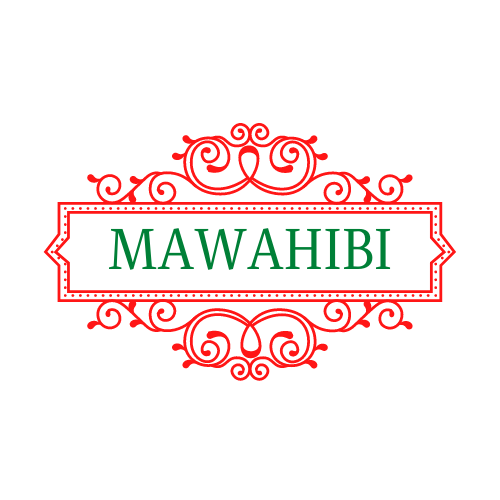Many people in the cold season are literally haunted by the "autumn blues" with sharp impotence, depression, and unpleasant symptoms. Perhaps it is autumnal depression in adults, or more precisely, seasonal affective disorder.
Many people report the "fall/winter blues" or fall depression, which is actually, from a medical point of view, correctly called seasonal affective disorder (SAD). It affects 1–3% of adults and can markedly reduce the quality of life. This disorder has similarities with major depressive disorder (MDD). The main difference, according to psychiatrists, is that the symptoms of this disorder follow a specific seasonal schedule, usually, problems occur during the fall and winter months, with complete remission in the spring and summer.
Researchers have found that many of the specific symptoms of fall depression or SAD are similar to those of depression — loss of energy, interest, changes in appetite, problems with sleep and concentration, and so on. , especially with regard to foods high in carbohydrates and weight gain than with non-seasonal depression.
What is depression?
Many people go through short periods of time when they are sad or not like themselves. Sometimes these mood changes start and end as the seasons' change. People can begin to feel "depressed" when the days get shorter in the fall and winter (which is why it is often referred to as the "fall or winter blues") and begin to feel better in the spring when daylight hours get longer.
In some cases, these mood changes are more severe and can affect the way a person feels, thinks, and copes with daily activities. If you notice significant changes in your mood and behavior as the seasons' change, you may be suffering from seasonal affective disorder (SAD), a type of depression.
Causes of Autumn Depression in Adults
In most cases, the symptoms of autumn depression begin in late fall or early winter and go away in spring and summer. Some people may experience depressive episodes during the spring and summer months - this is called summer SAD or summer depression and is less common.
Scientists explain that there are many theories behind the causes of autumn depression in adults, but the most widespread one is that the amount of sunlight that people are exposed to during the fall and winter decreases. If you look at the prevalence of major depression at different latitudes, studies show that it is quite common in northern latitudes, and much less often in southern latitudes.
Sunlight affects an area of the brain called the suprachiasmatic nucleus, which is located in the hypothalamus and is responsible for functions such as sleep, pulse, and blood pressure, appetite, weight regulation, and sexual function.
One theory is that with less exposure to sunlight, the internal biological clock that regulates mood, sleep hormones, is shifted in humans. Exposure to light can reset the body clock.
Another theory is that brain chemicals (neurotransmitters such as serotonin) that transmit information between nerves may be altered in people with SAD. It is believed that exposure to light can correct this imbalance.
Melatonin, a key chemical known to affect sleep patterns, may also play a role in triggering the seasonal affective disorder. Some researchers have suggested that lack of sunlight stimulates the production of melatonin in some patients. This can be one of the factors that cause lethargy and drowsiness.
Young people are more likely to develop SAD, and the risk decreases with age. A family history of mood disorders or other forms of depression increases the risk of developing problems.
Symptoms of Autumn Depression in Adults
In general, the list of signs and symptoms of SAD is similar to that of major depression. However, with autumn depression, these signs and symptoms come and go at about the same time every year. The main symptom is a sad, hopeless mood that:
* present for most of the days and lasts most of the day;
* lasts more than 2 weeks;
* impairs a person's performance at work, school, or in social relationships.
Other symptoms of depression include:
* changes in appetite and fluctuations in weight (both in plus and minus);
* sleep problems (from insomnia to constant sleepiness);
* loss of interest, desire, and desire for work, hobbies, people, or sex;
* withdrawal from family members and friends;
* Feelings of worthlessness, hopelessness, excessive guilt, pessimism, or low self-esteem;
* excitement or feeling slowed down, lethargic;
* irritability;
* fatigue;
* problems with concentration, remembering, and making decisions;
* tears come quickly or you want to cry, but the person is not able to;
* Suicidal thoughts (which should always be taken seriously)
* loss of connection with reality, hearing voices (hallucinations), or strange ideas (delusions).
Treatment of autumn depression in adults
It is very important not to diagnose yourself. If you have symptoms of depression, see your doctor for a thorough evaluation. Sometimes physical problems can cause depression. But in other cases, the symptoms of SAD are part of a more complex psychiatric problem. A mental health professional can usually assess your picture of symptoms and determine if you have fall depression or another type of mood disorder.
Diagnostics
To be diagnosed with SBP, a person must meet the following criteria:
* Must have symptoms of major depression or the more specific symptoms listed above;
* Depressive episodes must occur in certain seasons (i.e., only in the winter or summer months) for at least 2 consecutive years, but not all people with SAD experience symptoms every year;
* These episodes should be more frequent than other depressive episodes the person might have at other times of the year during their life.
Modern methods of treatment
If you think you may be experiencing symptoms of SAD, talk to your GP or psychiatrist.
Therapies that can help many people with SBP fall into four main categories that can be used alone or in combination:
* light therapy;
* psychotherapy;
* antidepressants;
* vitamin D.
There is strong evidence that lightboxes that are 20 times brighter than conventional indoor lighting are very effective. Lightboxes are marketed and easy to buy, however, a person should not start light therapy without talking to their doctor or psychiatrist as this can worsen certain eye conditions.
While artificial sunlight produced by lightboxes is effective, nothing works better than natural street light. Overall, improved mood tends to correlate with lengthening daylight hours, so most people feel significantly better when spring is in full bloom. Cold weather and many cloudy days make it difficult for people to get enough outside light during the fall and winter months.
Medicines are also effective in treating SAD. But only a specialist should select them. Since SAR, like other types of depression, is associated with impaired serotonin activity, antidepressants called selective serotonin reuptake inhibitors (SSRIs) are used when symptoms appear. These agents can significantly improve the mood of the patients. Commonly used SSRIs include fluoxetine, citalopram, sertraline, paroxetine, and escitalopram. All medicines can have side effects. Talk to your doctor about the possible risks of using these medicines for your condition. You may need to try several different antidepressants before finding one that relieves your symptoms without causing problematic side effects.
Psychotherapy or "talking therapy" is also used to treat autumn depression. Cognitive Behavioral Therapy (CBT) is a type of talk therapy aimed at helping people learn to cope with difficult situations. It is also adapted for people with SAD. It is usually carried out in 2 group sessions per week for 6 weeks and aims to eliminate negative thoughts associated with the winter season (for example, about the darkness of winter) with more positive thoughts. She also uses a process called behavioral activation, which helps people identify and plan enjoyable indoor or outdoor activities to combat the loss of interest they usually experience in winter.
Regardless of whether drugs alone or other treatments are used, a combination of the two, anyone with SAD can benefit from healthy lifestyle changes. Regular sleep and exercise, a healthy diet, and a constant urge to socialize with others can reduce symptoms.
Because many people with SAR are often vitamin D deficient, vitamin D supplementation can help improve their symptoms. However, studies testing whether vitamin D is effective in treating SAD has produced mixed results, with some results indicating that it is as effective as light therapy, but others showing no effect.
Prevention of autumn depression in adults at home
Because the timing of winter SAD is predictable, it may be helpful for people with a history of depression to start the treatment mentioned above before the season to prevent or reduce depression.
To date, very little research has focused on this issue, and existing studies have not found conclusive evidence that early initiation of light therapy or psychotherapy can prevent the onset of depression. The only prophylactic antidepressant treatment prevented SAR in study participants, but it also had a higher risk of side effects. Therefore, people should discuss with their doctor beforehand if they want to start treatment early to prevent depressive episodes.
Popular questions and answers
neurologists answered questions about autumn depression in adults.
What complications can there be with autumn depression?
If depression lowers your quality of life or you have suicidal thoughts, do not delay, see a specialist. It is not a shame to visit a psychiatrist. We need to take care of the psyche in the same way we take care of the heart or stomach.
When to call a doctor at home for autumn depression?
Autumnal depression is medically called seasonal affective disorder. It manifests itself as a decrease in mood, loss of strength, loss of interest, lack of pleasure in life, feelings of guilt, memory impairment, anxiety, sluggishness, and sleep disturbances. Symptoms last at least 2 weeks and occur at certain times of the year, most commonly in fall and winter, when daylight hours are reduced.
If you suspect you have a seasonal affective disorder, it is worth assessing the level of depression on the Beck scale and the Hospital Anxiety and Depression Scale (which can be found on the Internet). Higher values indicate the need to see a psychiatrist for a doctor to prescribe light therapy, psychotherapy, or antidepressants.
Can autumn depression be treated with folk remedies?
You can help yourself on your own: try to be in the light more, buy bright lamps, add physical activity, adhere to a sleep schedule.


